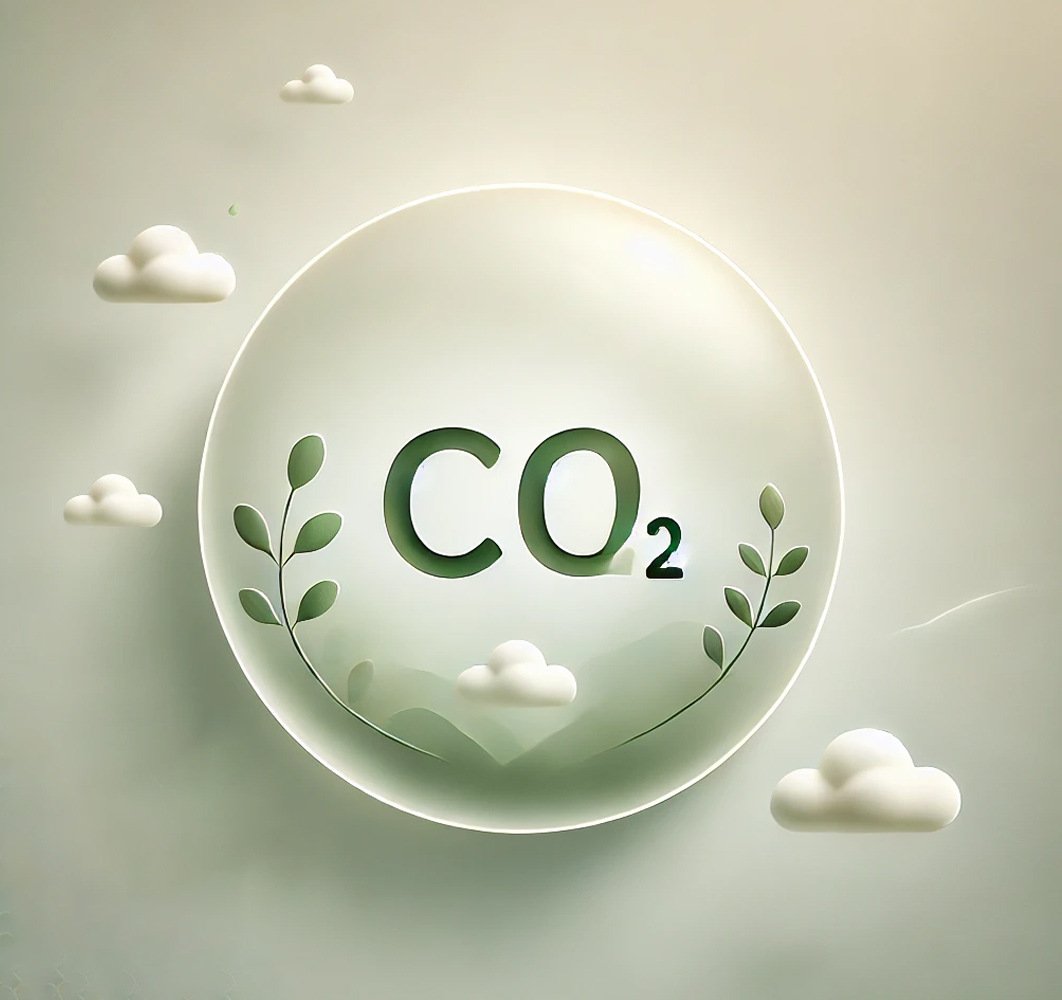CO2 (carbon dioxide) is a colorless, odorless gas released through natural processes such as respiration and volcanic eruptions, as well as through the burning of fossil fuels such as oil, coal, and gas. Measuring CO2 emissions is critical to our understanding of, and response to, climate change.
CO2: an indispensable but harmful gas
CO2 is an important part of Earth's atmosphere and participates in the carbon cycle. Without carbon, there would be no life on Earth; it forms the basis of all essential substances in plants, animals, and humans. For example, plants use CO₂ in the process of photosynthesis to produce oxygen. Animals and humans use carbon in the form of carbon dioxide (CO2) during respiration, where it is emitted by our bodies when we exhale.
Despite its indispensability, too much CO2 is a problem. The release of CO2 during combustion, including that of fossil fuels, contributes to rising CO2 levels in the atmosphere. These elevated levels amplify the greenhouse effect, trapping heat in the atmosphere and leading to a rise in global temperatures.
The role of CO2 in climate change
Global warming is leading to extreme weather events, rising sea levels and loss of biodiversity. It is therefore important to monitor and control CO2 emissions. By measuring, we can not only better understand where and how to reduce emissions, but more importantly which measures are most effective.
Legal requirements and compliance
Many countries have strict regulations and laws to limit CO2 emissions. The Paris Climate Agreement plays a major role in this effort. This agreement aims to limit global warming to no more than 1.5 degrees Celsius to avoid the worst effects of climate change. Companies are often required to measure their CO2 emissions and comply with emission standards. Failure to comply can lead to fines and penalties.
What is CO2 equivalent?
In addition to CO2, other greenhouse gases that contribute to climate change include methane (CH4), nitrous oxide (N2O) and fluorinated gases (such as HFCs and PFCs). Each of these gases has a different ability to retain heat. To compare the impact of different greenhouse gases, the term CO2 equivalent is used. This translates the amount of greenhouse gas to the amount of CO2 that would have the same warming effect, providing a uniform way to quantify impact.
The impact of waste treatment and recycling on CO2 emissions
Waste processing has a significant impact on CO2 and other greenhouse gas emissions. Significant amounts of CO2 can be released at each stage of the waste chain:
- Production of goods: CO2 emissions come from the production of goods that eventually end up as waste. The extraction of raw materials and the energy required for production processes contribute to the overall carbon footprint.
- Waste treatment: Methods of waste treatment that involve energy recovery such as incinerators, biomass energy generation, and fermentation result in the emission of many CO2 and other greenhouse gases. Landfills of waste can also emit many greenhouse gases when organic streams decompose over time and sometimes release very violent greenhouse gases from household appliances. Landfills are almost non-existent in the Netherlands but elsewhere in the world they are a serious source of greenhouse gases.
- Waste recycling: By not incinerating waste, but reusing it as a raw material through reuse or recycling techniques, emissions from waste incineration are avoided. In addition, there is less new raw material extraction, with the advantage that this carbon remains stored in the earth. Recycling also costs energy, but in the end the profit is actually always greater.
- Waste transportation: Transporting waste to treatment facilities causes carbon emissions from vehicle fuel use.
Milgro and CO2
At Milgro, we measure the CO2 impact of each waste stream for our customers through our dashboard. To make this possible, we have developed a methodology specifically for waste management. The various LCA Experts at Milgro use an LCA (life cycle analysis) to calculate the broad impact of a waste stream, including the aforementioned phases such as production, processing and transport. This analysis includes avoided emissions, showing the positive impact of recycling instead of using virgin raw materials. With this information, we can calculate the impact of optimizations on waste, identifying the projects that are most ecologically beneficial.
Want to learn more about our dashbaord? Book a free, no-obligation demo online at a time that suits you.
Stay up to date
Stay up to date on all new developments? Follow us on LinkedIn and Instagram or subscribe to the newsletter. Are you curious about what Milgro can do for your operations and waste process? Then please contact .











